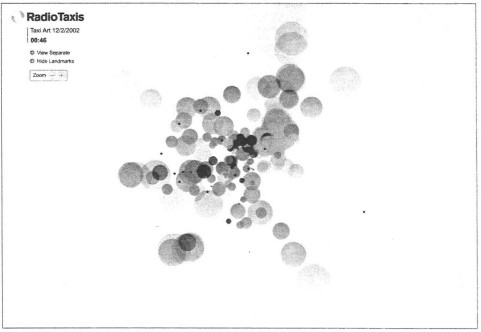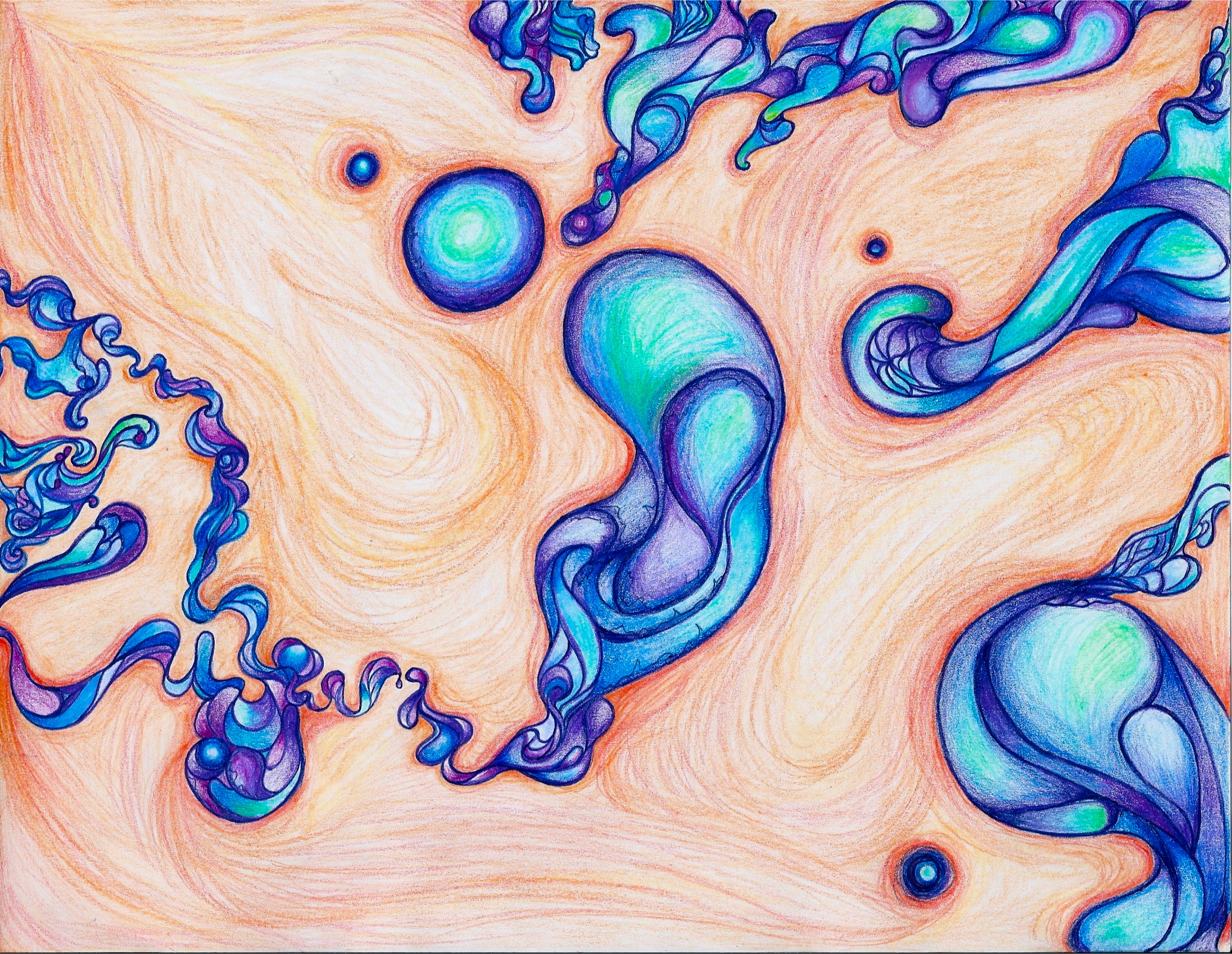

For this reading response I have chosen to relate one of my personal works of art to that of a digital drawing composed from information from Radio Taxis.
This picture is found in the article "Internet Art" by Rachel Greene and focuses on enlisting the car movements of London Black Cabs. This work leads
your eye smoothly from one end of the image to another, and I felt that my artwork, done with colored pencil does the same.


This image I made to attract the eye from one area of the image to another, and in an a natural way I created circular/spherical images made from lines.
This is again much like Radio Taxis because it takes the straight lines from taxis routes and the amount of taxis in a given area and presents them in
different colored circles which are overlapping and feeding off each other.
Rachel Greene discusses the internets contribution to art and how we have now entered a new era of art, the digital age. Greene even discusses digital art as controversy, saying that many platforms of digital art such as websites and software are often ignored as an artform all together. Christiane Paul wrote the article "Digital Art" and discusses the history of digital art. She recalls how digital art started in the 60's and improved in the 70's with technology such as video arts, and satellites bringing new grounds to performance art. In the 80's, artists that would normally use traditional or non-digital media started to incorporate new digital media platforms. When the 90's came, there was a boom of digital technology and this marks the era when digital art started to become more widely accepted.
I feel like my artwork compared to this Radio Taxis artwork is a good example of how digital and physical artwork have overlapping concepts and visuals.